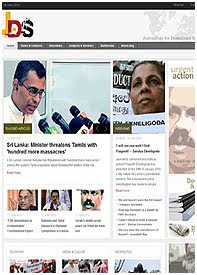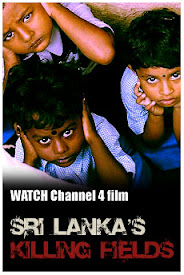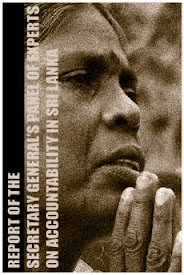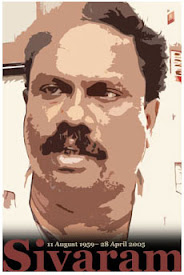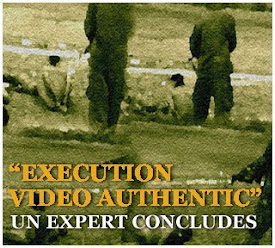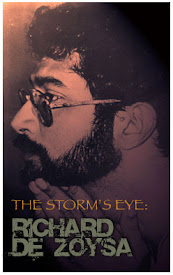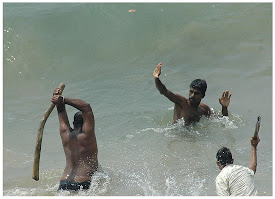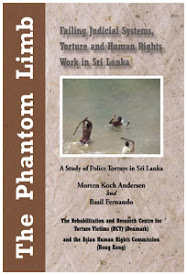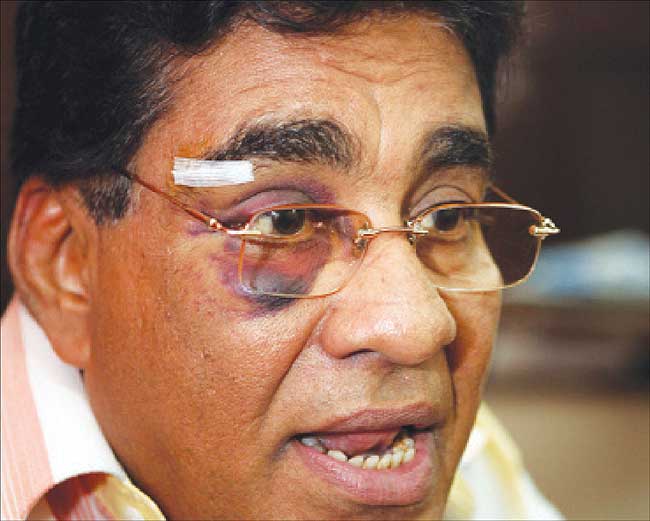
By Lal. S. Kumara | Daily Mirror
.............................................................................................................................................................................................
“I’m the one who chased one of those journalists ‘PoddalaJayantha’ out of this country. I will break the limbs of all these journalists, in public if they dare to set foot in the country” the Minster warned.
Speaking at a demonstration against the resolution against Sri Lanka at the UNHRC held in Kiribathgoda today Silva also said it is the only the President who can remove him from office.
He also said “Even if a Tsunami flow from Sigiriya I’m sure that no Tsunami will flow against me from President Mahinda Rajapaksa” . “Only Mahinda Rajapakshe can sack me, no other big shot can lay their hands on me until that happened I won’t leave Kelaniya. I know the sons of D.A. Rajapaksa from the time they were kids. The King of this country loves me, the King of this country trusts me” he said.
The Minister informed the public present at the meeting that his son, from this day, would be in the hands of the public. “I’m not afraid to die; two drug dealers from Colombo want to chase me away. But I’m not frightened to die, if something happens to my life, my wife and two children will still be there. From this day onwards my son will be in your hands” he said.
© Daily Mirror
Saturday, March 24, 2012
Sri Lanka: Minister threatens to break limbs of journos
Saturday, March 24, 2012
UN rights chief warns against Sri Lankan activist attacks

AFP | Expatica
.............................................................................................................................................................................................
The UN Human Rights Council on Thursday adopted to the consternation of Colombo a US-led resolution demanding a probe to violations carried out in Sri Lanka's battle against Tamil Tigers separatists during their war in 2009.
The run-up to the vote was marked by "an unprecedented and totally unacceptable level of threats, harassment and intimidation directed at Sri Lankan activists who had travelled to Geneva to engage in the debate, including by members of the 71-member official Sri Lankan government delegation," said Pillay.
In Sri Lanka, media outlets have also been running a "continuous campaign of vilification, including naming and in many cases picturing activists, describing them as an 'NGO gang' and repeatedly accusing them of treason, mercenary activities and association with terrorism," said Pillay.
"Some of these reports have contained barely veiled incitement and threats of retaliation," she added.
Some of these reports were carried by state media outlets or filed by journalists accredited to the Human Rights Council session through the Sri Lankan mission, noted the UN rights chief.
"There must be no reprisals against Sri Lankan human rights defenders in the aftermath of yesterday's adoption by the Human Rights Council of a resolution on Sri Lanka," she added.
Meanwhile, the Sri Lankan envoy to Geneva himself also received an anonymous letter which UN security and the police are investigating, she said.
© AFP
Saturday, March 24, 2012
Sri Lanka rejects UN demands for inquiry

By Ben Doherty | The Age
.............................................................................................................................................................................................
Its Foreign Minister, G.L.Peiris, said the countries which supported Sri Lanka were ''acutely conscious of the danger of setting a precedent which enables ad hoc intervention by powerful countries in the internal affairs of other nations''.
The government would not bow to international demands for an inquiry, Mr Peiris said.
The UN's 47-member Human Rights Council this week passed the resolution which called on Sri Lanka to allow an independent probe into allegations the government committed war crimes during its civil conflict against the separatist Tamil Tigers.
Any probe could be acutely uncomfortable for the Sri Lankan government, reaching to the very top of the Rajapaksa family-dominated administration.
In Colombo, protesters took to the streets, condemning the UN, and carrying pictures of President Mahinda Rajapaksa, who, they say, freed their country from terrorism.
The resolution, co-sponsored by the US, France and Norway, said Sri Lanka's domestic investigation, the Lessons Learned and Reconciliation Commission, did ''not adequately address serious allegations of violations of international law''.
Carefully worded - and watered-down from its original text - it demanded Sri Lanka ensured ''justice, equity, accountability and reconciliation'', following the end of the 27-year war.
A UN panel of experts report last year found up to 40,000 civilians may have been killed during the government's final offensive against the Tamil Tigers in the country's north in 2009.
© The Age
Saturday, March 24, 2012
A return to Sri Lanka’s killing fields by Channel 4

By Barry Mason | World Socialist Web Site
.............................................................................................................................................................................................
Presented by Jon Snow, it showed further horrific scenes of the closing days of the campaign against the Liberation Tigers of Tamil Eelam (LTTE) and the thousands of civilians caught up in it.
The Sri Lankan government produced its response to the original charges made by Channel 4 2011 documentary of war crimes carried out in the closing stages of the campaign against the LTTE. It produced a report at the end of last year, “The Lessons Learnt and Reconciliation Commission (LLRC)”.
Snow said that while the report conceded a large number of civilians had died and expressed concern about a large number of Tamils detained at that time who have now disappeared, it failed to answer any of the charges of war crimes made against Sri Lankan forces. It also denies that any civilians were deliberately targeted and did not hold anyone to account.
Case histories were used to show that war crimes had been committed and that responsibility lay with the government and the armed forces.
In January 2009, a no-fire zone was established within the rapidly shrinking area of LTTE control, to which civilians fled. United Nations representatives on the ground set up a bunker within the no-fire zone and the coordinates were sent to the Sri Lankan government so army shell fire could be directed away from it.
Over the next few days, shells continued to rain down on the bunker, leading to carnage. A confidential internal UN report cited by the programme stated, “The probability of shellfire originating from government of Sri Lanka forces is considered 100 percent.”
Eventually, after personnel in the bunker contacted UN and Australian representatives in Colombo pleading for them to pass the coordinates to the Sri Lankan heads of armed forces, the shelling was diverted slightly to avoid the bunkers but still fell within the no-fire zone. This showed the shelling originated from government forces and that they must have been aware of its murderous impact.
Civilians fled the no-fire zone and headed for a second smaller one declared by the Sri Lankan government on February 12, on a long narrow piece of land adjacent to the ocean. Three-hundred thousand civilians set up camp there.
In its second case history, the programme accused the Sri Lankan government of denying food and medicine to hundreds of thousands of trapped civilians by deliberately downplaying the numbers caught in the second declared no-fire zone. A cable from the US embassy in Colombo in April 2009, posted on WikiLeaks, showed the Sri Lankan government estimate of civilians left in the LTTE controlled area to be 60,000. Yet the United States and UN, using evidence from satellite pictures and other methods, put the true figure at several hundred thousand. The Sri Lankan government had drones in the area and must have been aware of the number of civilians.
The small amounts of food and medicine allowed into the area contributed to a huge humanitarian crisis. The deliberate restricting of food and medical supplies to civilians within a war zone is a war crime. The Channel 4 footage showed malnourished refugees and people with horrific wounds that had to be left untreated.
The original 2011 Channel 4 documentary showed footage of Sri Lankan soldiers executing naked and bound LTTE soldiers in the final days of the war. The footage had been taken by the soldiers as trophy videos on their mobile phones. It was independently verified, yet Sri Lankan authorities accused Channel 4 of faking the footage.
The current documentary explained that the LLRC did touch on these executions, but came to no conclusions. Last month, the army announced that an inquiry would take place, run by the army rather than an independent body.
The final case history showed new and shocking footage of executions by the army, with responsibility going to the top of the chain of command. Footage included the execution of the 12-year-old son of the LTTE leader, Velupillai Prabhakaran. A sworn affidavit taken from a senior Sri Lankan officer explains how the boy was sent along with five LTTE bodyguards to surrender to the Sri Lankan military. He was interrogated to get information on the whereabouts of his father. The affidavit finishes with the officer saying he subsequently learned the boy and the five bodyguards were dead.
The footage showed the bodyguards dead on the ground, apparently shot after being bound as in the previous footage of executions. Channel 4 again got the footage independently verified. The footage showing the dead boy was examined by an independent forensic pathologist. He concluded the boy had initially been shot at close range, standing in front of the soldier who fired the shot, which was near his heart. The pathologist explained that the subsequent wounds on the body must have been inflicted as the boy lay on the ground on his back. He described the boy’s death as a murder.
The next day, the body of Prabhakaran himself was displayed on television. The documentary analysed the footage of the head wound suffered by Prabhakaran and concluded his death was also the result of an execution, rather than a wound suffered in combat.
The widespread pattern of the executions involving being bound and shot in the back of the head suggests a policy directed from above, rather than the actions of rogue soldiers.
The conflict finally ended on May 19. The programme showed how the West was prepared to accept at face value assurances by the Sri Lankan government and to turn a blind eye while it finished off the LTTE. Then-UK foreign secretary David Miliband met with his Sri Lankan counterpart on April 29, 2009, while the army was carrying out its murderous operation. A leaked cable from the US embassy in Colombo to Washington quoted Miliband describing the Sri Lankan government as liars in its statements regarding the deaths and sufferings of civilians caught up in the war zone.
In a keynote speech—written for him by UK public relations firm Bell and Pottinger—at the UN in New York following the end of the war, Sri Lankan president Mahinda Rajapakse was well received. He warned the international community to keep out of Sri Lanka’s business.
Rajapakse can rest easy, knowing Sri Lanka’s strategic importance for the US in its ongoing war preparations for a future conflict with China will provide all the diplomatic cover he will need.
© WSWS
This site is best viewed with firefox

Search
Is this evidence of 'war crimes' in Sri Lanka?
Archive
- ► 2010 (1312)
- ► 2011 (687)
Links
- Reporters Sans Frontières
- Media Legal Defence Initiative
- International Press Institute
- International News Safety Institute
- International Media Support
- International Freedom of Expression eXchange
- International Federation of Journalists
- Committee to Protect Journalists
- Asian Human Rights Commission
- Amnesty International
